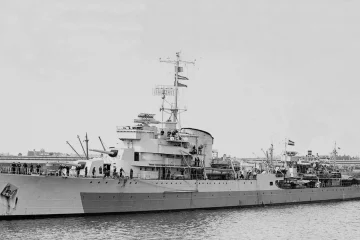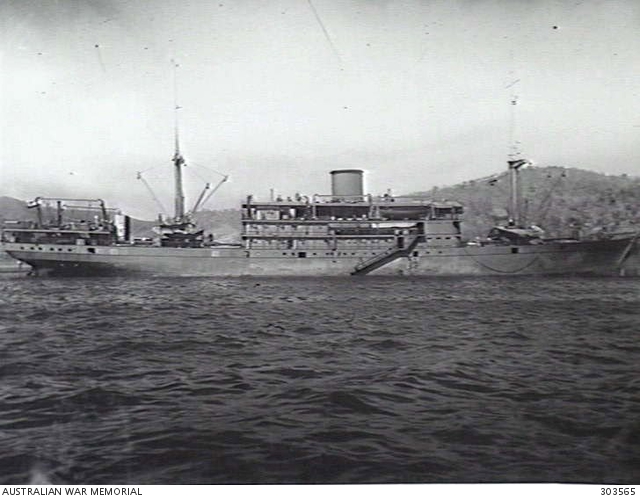
The Dutch merchant vessel Maetsuyker, weighing 4,131 tons, played a significant role during World War II. It managed to escape from the Netherlands East Indies (NEI) to the safety of Fremantle, Australia, just before the final surrender on Java Island. This article traces the journey of the Maetsuyker as it transitioned from a fleeing merchant ship to a vital asset in the Allied war effort, serving as part of the Papuan Campaign and ultimately being converted into a hospital ship.
Escape and Acquisition:
As the Japanese invasion loomed over the NEI, the Maetsuyker embarked on a perilous journey, successfully reaching Fremantle before the surrender on March 12, 1942. Following its arrival, the vessel became one of the 24 Dutch ships berthed in Australian ports, earmarked for immediate use by the United States Army Forces in Australia (USAFIA). These ships were leased from the Netherlands Government-in-Exile through complex negotiations involving the British Ministry of Transport in London, the NEI Purchasing Commission in Melbourne, and the Allied Shipping Council in Canberra. After concluding these negotiations on June 10, 1942, the Maetsuyker was designated as a USAFIA charter vessel, with maintenance and crew welfare entrusted to the Dutch shipping line KPM (Koninklijke Paketvaart Maatschappij).
Involvement in the Papuan Campaign:
Among the 19 Dutch vessels assigned to convoys supporting the Battle of Milne Bay in Papua New Guinea, the Maetsuyker played a crucial role in the transportation of reinforcements and supplies to the battlefront. These convoys, codenamed LILLIPUT, were organised to deliver vital resources for the assaults on the Japanese defenses at Buna, Gona, and Sananda on the north coast of Papua. The first LILLIPUT convoy departed from Townsville on November 15. The Maetsuyker remained actively engaged in these convoys until their conclusion in mid-June 1943. Throughout its service in Papua and New Guinea waters, the Maetsuyker contributed to the Allied efforts in gaining a strategic advantage in the region.
See also: Dutch participation in Battle of Milne Bay 1942
Conversion to Hospital Ship:
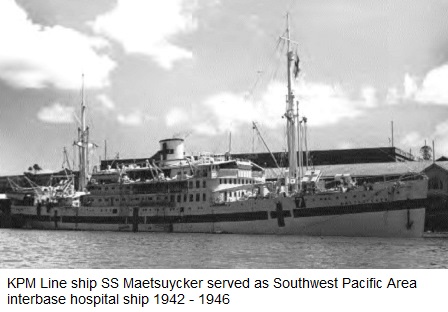
Recognising the need for medical support in the Pacific theater, the US Army decided to convert the Maetsuyker into a hospital ship. In February 1944, it underwent significant modifications and became known as Hospital Ship 7. The vessel was staffed by the US Army’s 196th Station Hospital unit, which provided critical medical care to injured personnel.
The Dutch merchantman Maetsuyker contributed significantly to the war effort, providing essential transportation and medical support. Its story exemplifies the collaborative efforts between the Dutch, American, and Australian forces in the fight against Japanese aggression in the Pacific theater.
Unique set of 1944 pictures of the ship
The following is a set of unique pictures received from Peter Dunn, who took the photographs from the exhibits at NARA’s College Park library near Washington DC. They were taken after the US Army had taken over the hospital ship from the Dutch. The original text is published in the rows below the pictures. For an enlarged set of the pictures see here.
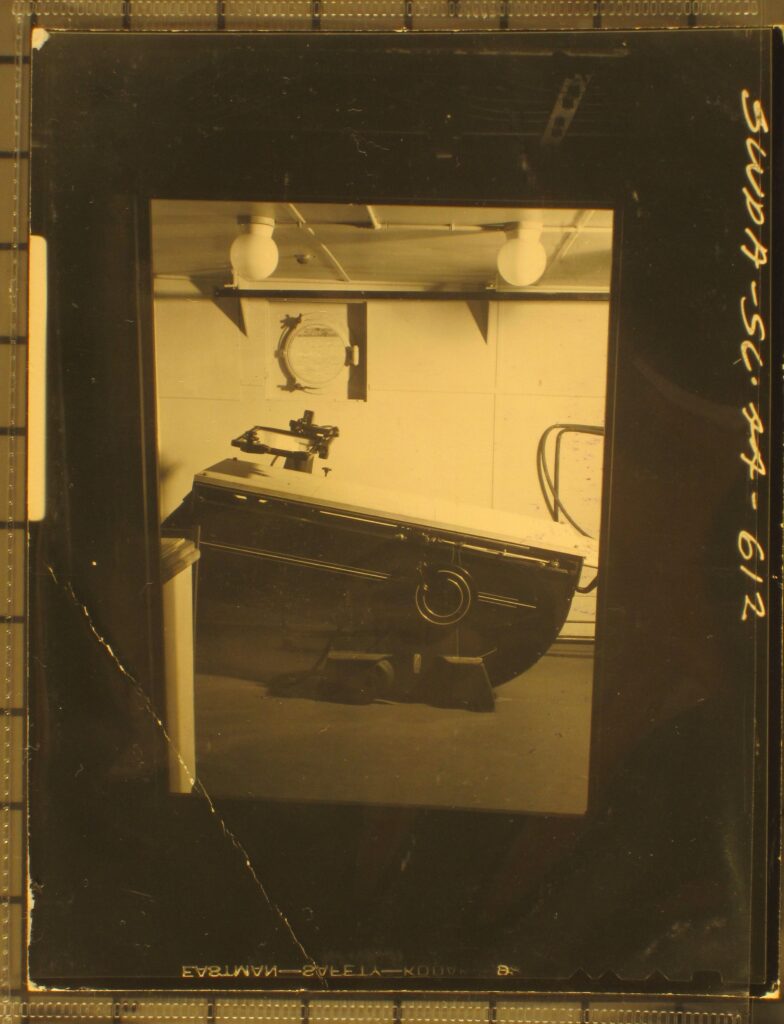
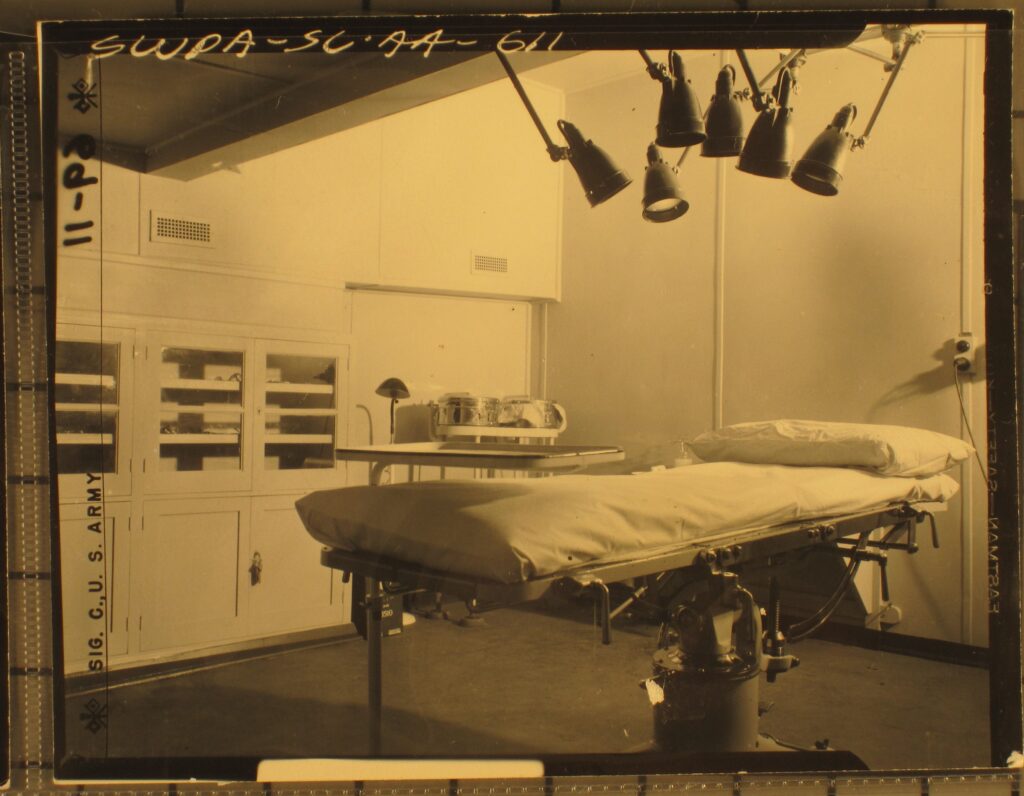
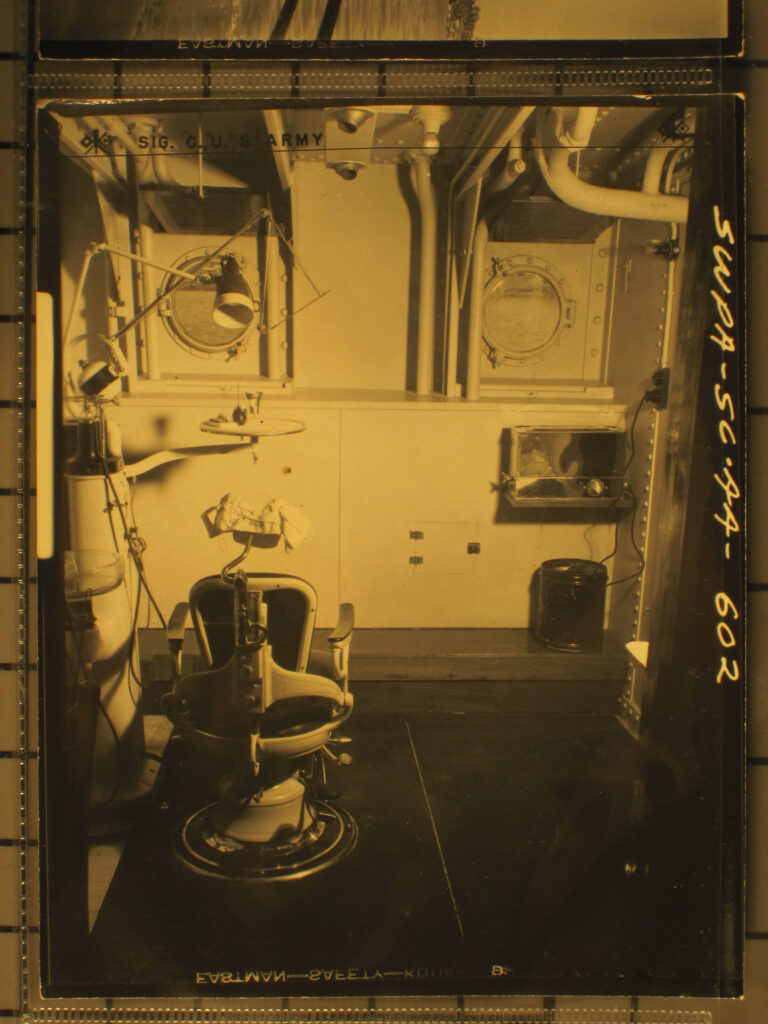
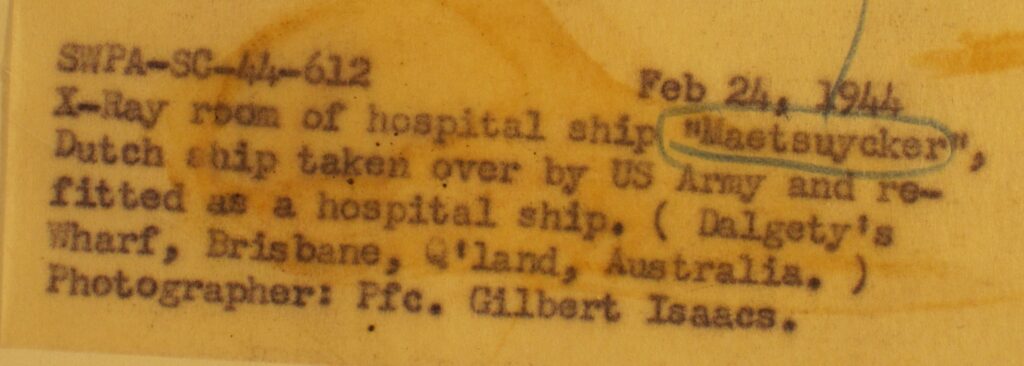
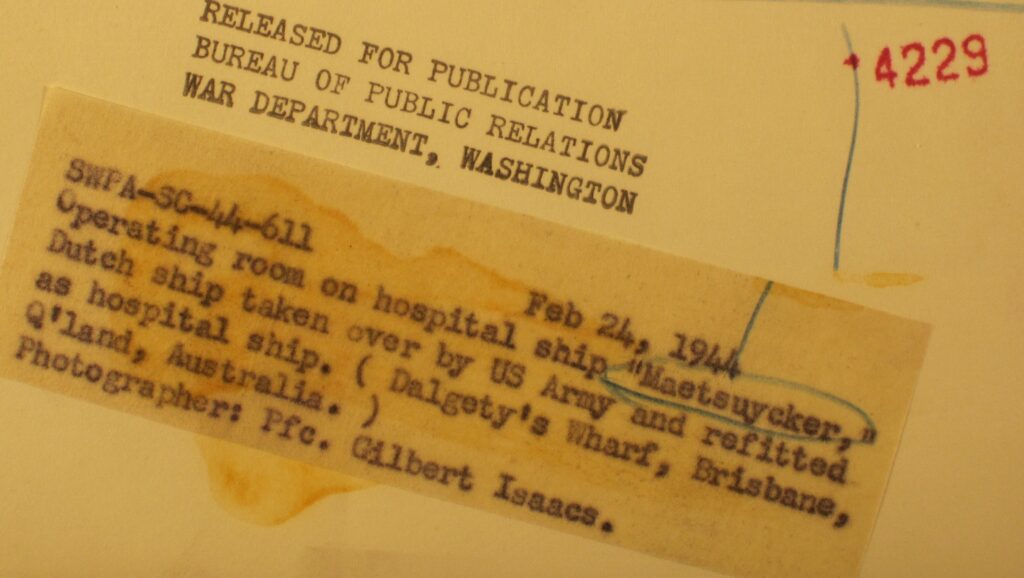
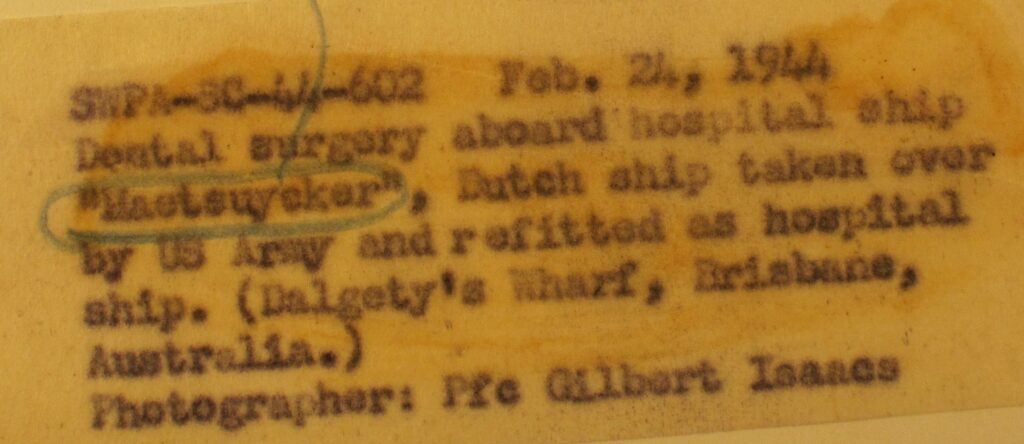

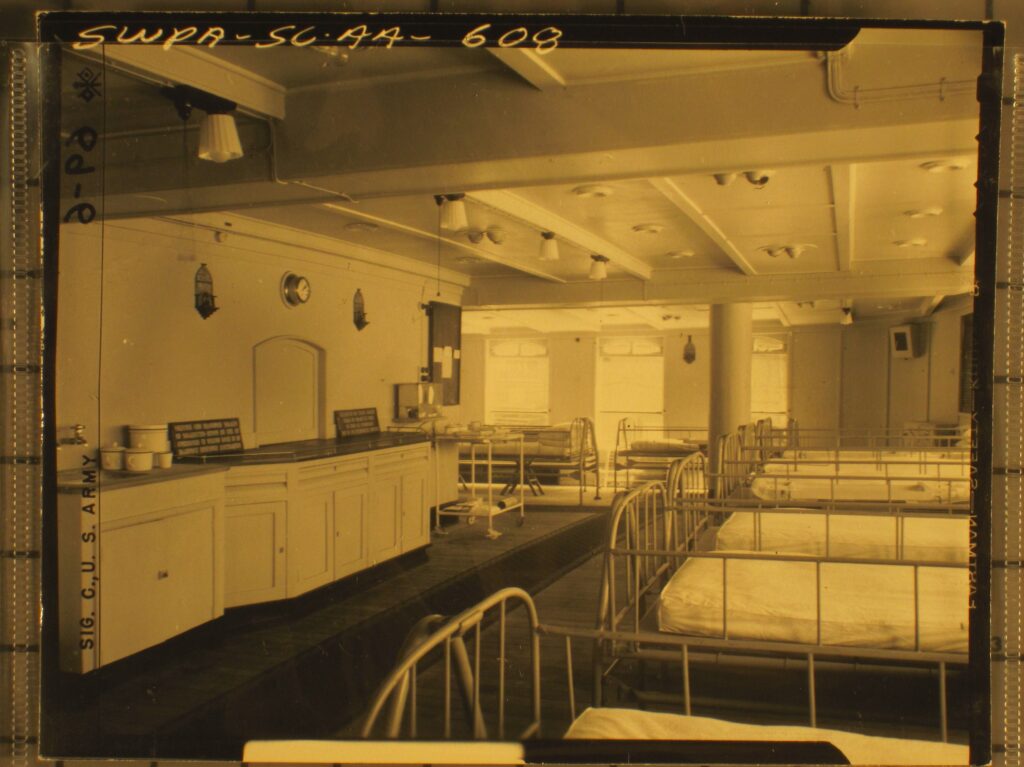

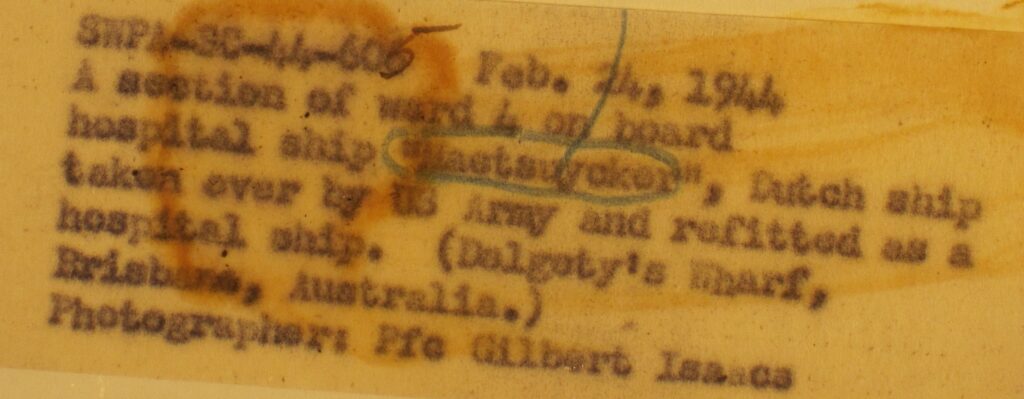
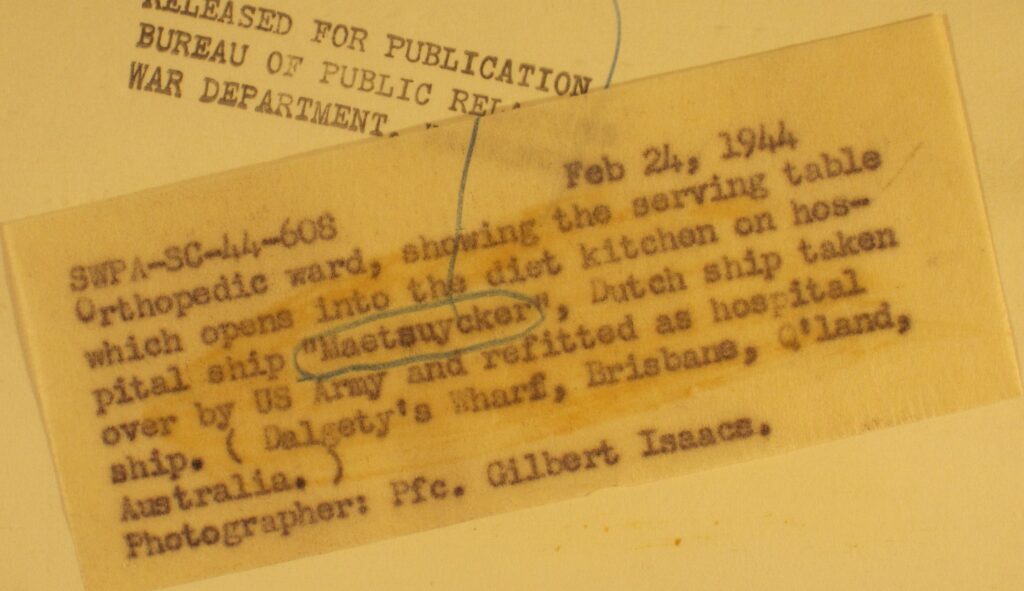

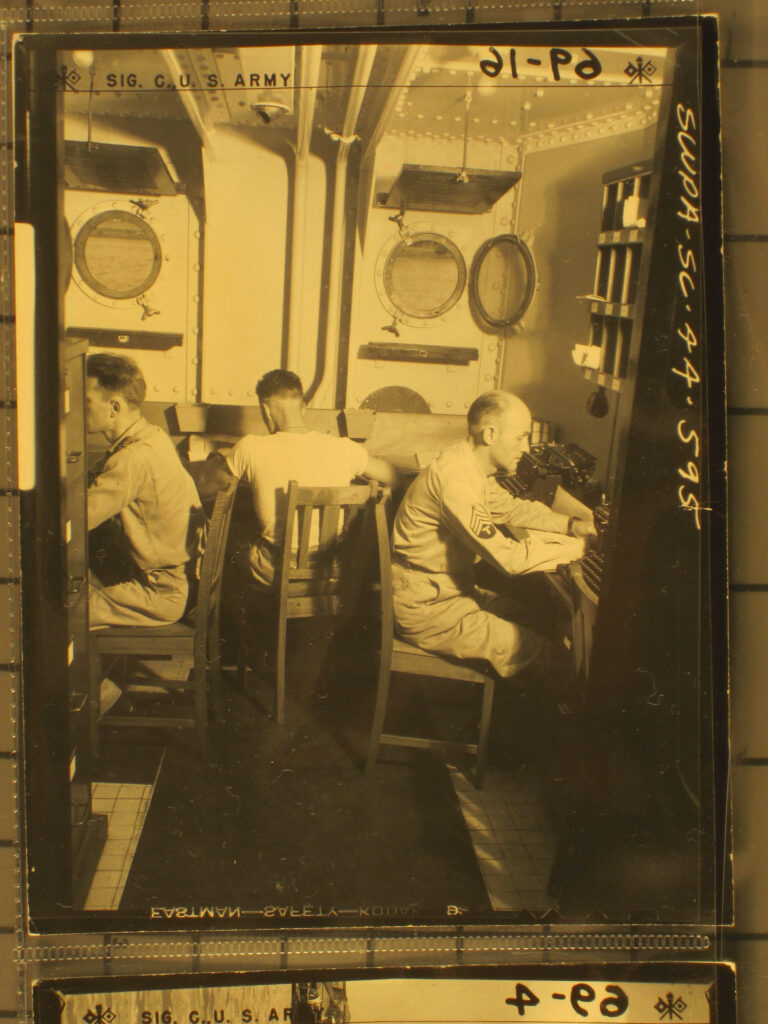

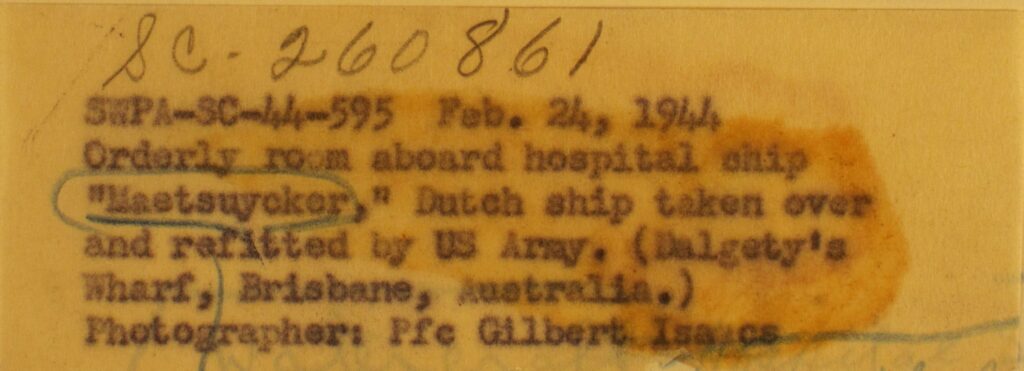
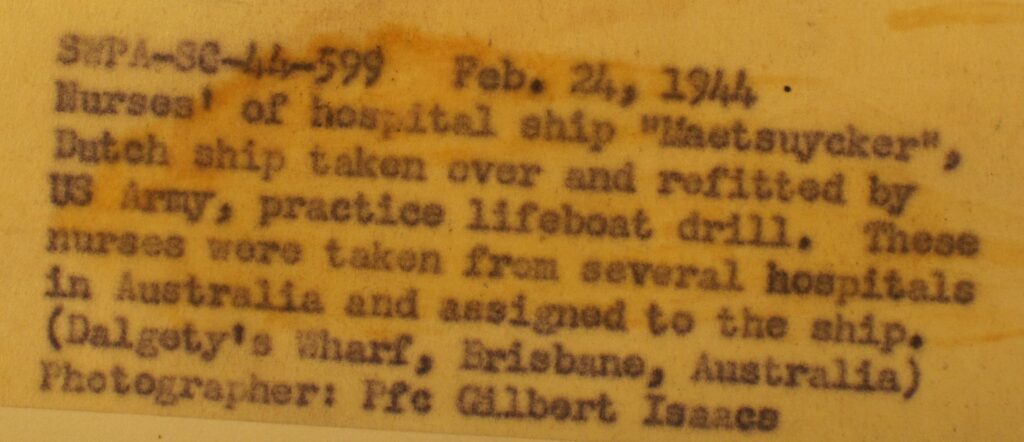
See also: Dutch merchant fleet delivered major contribution to the war in the Pacific.

